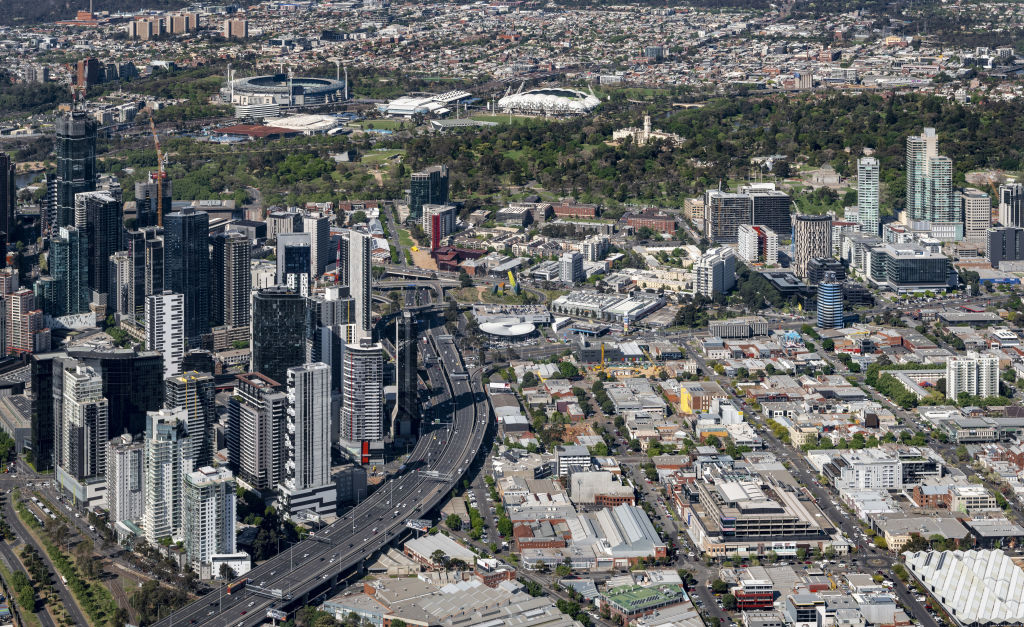
Demand for warehouses in Melbourne set to trigger a boom in speculative development
The amount of ‘speculative’ warehouse development in Melbourne is forecast to double this year, thanks largely to the growth in demand from the e-commerce sector, according to new research.
The volume of projects being developed without any tenant pre-commitment in 2019 is expected to reach 280,000 square metres, according to the latest research from Knight Frank.
This is more than double the 110,500 square metres delivered in 2018, it found.
This space is being snapped up quickly, data suggests. Almost half of these speculative warehouse projects in Melbourne in 2017-2019 were leased in the three months before they were completed.
Finn Trembath, Knight Frank’s associate director for research, said that the “noticeable” increase in land prices in recent years had been driven in part by the rise in speculative development.
“It stands to reason (that) developers have purchased land in response to an increased demand in spec developments. So connected to that, land values have risen at the same time,” he said.
He cited the sale of a land parcel in Truganina, in Melbourne’s west, which sold for $237 a square metre in May 2019. A similar land lot in Truganina had sold for $102 a square metre 12 months earlier.
“Notwithstanding the fact that no two lots of land are exactly the same, nonetheless that’s a pretty noticeable difference,” he said, adding that did not mean industrial land values had doubled across the board.
Running out of land
Melbourne’s west – which has traditionally been the biggest and most active industrial precinct in Victoria – accounts for more than half of the city’s speculative development pipeline in 2019.
About 142,000 square metres of speculatively built space is earmarked for the west, which is nearly double the 87,390 square metres recorded in 2018.
This is followed by the south-east region, where development activity has also ramped up recently, with 32 per cent of Melbourne’s speculative projects for this year.
“If anything, in areas like Truganina, they’re filling up fast and they are pushing further west – they’re running out of land basically,” Mr Trembath said.
“In Melbourne, the east and the south-east in general are pretty much full in terms of property across the board. The west and the north are the growth corridors and that would definitely apply for industrial.”
Residential development in the west, where industrial uses have historically been prominent, is also growing.
“You go out to areas like Point Cook, which is a bit further out, that area took off in the past five to 10 years for residential, that’s just where the space is.”
Competition for space is particularly high in Melbourne’s fringe suburbs, Mr Trembath said.
“It’s really hard to get any space for industrial at the moment. A lot of that land is being sought after for other uses, primarily residential.”
Future supply and demand
While speculative development in 2020 is not expected to exceed this year’s level at this stage, Mr Trembath said the pipeline could change as the year reached its end.
“The amount of spec projects next year should be considerable because a lot of the 2019 spec [space] is flowing over to 2020,” he said.
Mr Trembath said institutional groups had been the driving force behind the projected speculative development.
“We can say that in response to the recent demand, institutions have acquired land in expectation that tenants will either pre-commit or if there are sufficient enquiry levels, then there will be further spec development,” Mr Trembath said.
“But first they’re buying the land.”
In response to the downturn in retail, some institutions have been freeing up non-core retail assets, including regional shopping centres, to gain exposure in the industrial sector, which is perceived to be a growth area.
“If anything, retail is changing,” Mr Trembath said.
“Bricks-and-mortar retail is going through a difficult time at the moment, however, that new retail – e-commerce – is thriving.
“If you look at benchmarks overseas, for example in the UK, I think penetration of e-commerce is about 18 to 20 per cent now, whereas here it’s about half of that.”










